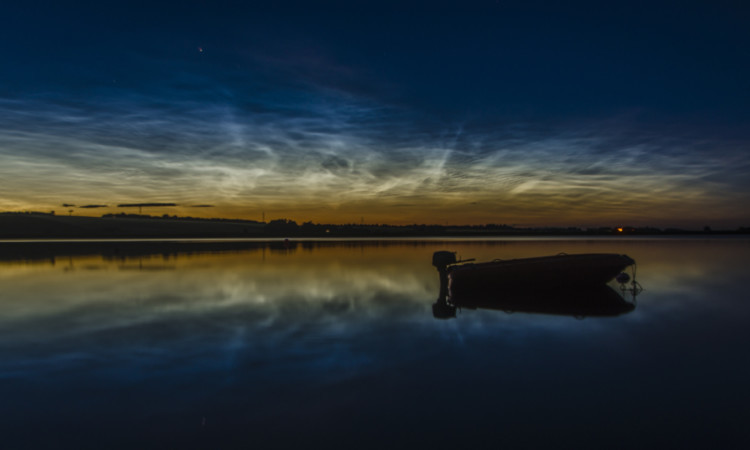Dundee stargazers and weather watchers had a treat on Sunday when noctilucent clouds formed in the sky.
The amazing sight was photographed by Tayside in Pictures’ Ben Hirst at Monikie, but seen all over the sky late at night on Sunday.
Noctilucent clouds are extremely rare, high clouds usually seen in summer. They exist at a greater height than any other clouds, about 200,000 feet, or 50 miles up.
They are composed of miniscule ice crystals in the upper atmosphere, thought to be formed from the dust from meteors, rockets and volcanoes.
Noctilucent clouds become visible about midnight at this time of year, when the sun is below the horizon but the upper levels of the atmosphere are still lit.
The structure of the clouds is so clear because the crystals are too small to become iridescent, or glow with light, like other high-altitude clouds.
Helen Chivers, forecaster for the Met Office, said: “Noctilucent clouds are seen relatively rarely and are the highest known clouds in the Earth’s atmosphere, found around 50 miles up.
“They usually become visible about the same time as the brightest night stars on clear, summer nights.”
“They’re made of ice crystals which reflect light from the sun, giving off a generally silvery blue light but this can sometimes be orange or red.”
Noctilucent clouds are thought to be becoming more common, brighter and more visible because of global warming.
Corinne Mills, a photographer from Kilmany, north Fife, who also caught the weather phenomena, said: “As I have no artificial light around me, I often take photos at night time of the stars and of the aurora.
“The sky is so light at this time of the year, which makes taking those kind of images more difficult.
“However, in the summer months these rare and strange clouds sometimes appear in the north. I wonder how many readers have seen these and not known what they are looking at.”
